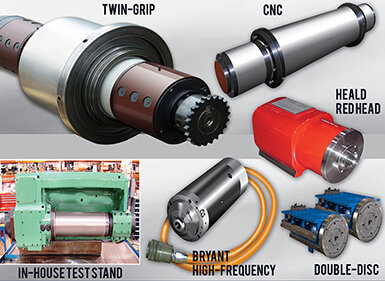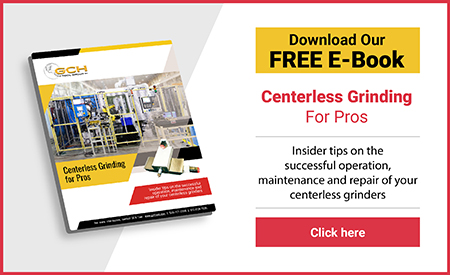Grinder Spindle Repair Saves Time and Money

With a lifespan of up to 10 years or more, spindles are frequently out of mind, if not out of sight, in most shops.
And it’s not until those telltale signs of serious wear – an increase in scrap parts, a decrease in part quality, vibrations that can be seen or heard – appear that grinder spindles suddenly become top of mind.
At that point, the question becomes “Do I buy a new spindle or repair the one I have?”
The answer 99% of the time will be: repair the spindle.
In today’s disposable world, that answer may seem counter-intuitive, but it makes sense from a bottom-line perspective. Grinder spindle repairs cost 50% less than new, and repaired spindles can be delivered in a third of the time that it takes for new spindles to arrive. When downtime can cost anywhere from $250 to $1,000 an hour, that difference in delivery time can put a serious dent in an operation’s profitability.
The one time that buying a new spindle could make sense is when the repair costs approach the purchase cost, but this generally only occurs when a spindle has been severely damaged, often in an incident that can be attributed to human error.
Of course, when a grinder spindle fails under normal operating conditions, there’s another question to consider: Why did the failure occur?
That answer nearly always is: contamination.
Chips, condensation, improperly located coolant, these are just a few of the possible contaminants involved in grinder spindle failures. The best way to prevent contamination is to implement a rigorous preventive maintenance program.
Spindles, with their long wear life, are often given the “set and forget” treatment. But scheduling a regular time to inspect, clean and lubricate the spindle system can extend a spindle’s service life and allow for the detection and repair of problems before a complete failure occurs.
A vibration analysis is also a useful component of any grinder spindle maintenance program. With an established baseline, periodic vibration tests can indicate problems before visible or audible vibrations begin.
Once the decision is made to repair a spindle, the next question, in theory, would be whether to repair the spindle in house or send it off to be serviced. But most shops these days don’t have the expertise to perform in-house repairs, so the default almost always is to send the spindle out for repairs.
This is where GCH Tool Group provides significant advantages. Our exclusive Remanufacturing Exchange Program allows you to order a grinder spindle, install it and then send the failing spindle back to us for repair.
Best of all, you can order and replace the grinder spindle as soon as you realize the existing part is deteriorating – before the current spindle actually fails. The ability to proactively order and install a substitute spindle eliminates needless downtime, allowing your operation to remain at peak productivity.
And back to that question about why the spindle failed. GCH Tool Group can provide a specific answer through our inspection and evaluation process. Before beginning any repairs, we’ll take a good look at the spindle and identify any issues that have accelerated the failure, and we’ll provide a full inspection report, explaining the issues and offering suggestions for avoiding them in the future.
Once each repair is completed, we’ll test the grinder spindle for eight hours on a stand specifically designed for that spindle type. We’ll check for a whole variety of issues, such as vibration, hydraulic pressure, deflection and end thrust. If we detect an issue, we’ll address it and then start the eight-hour test cycle over again.
When you get your spindle back, you can rest assured that it’s had the best inspection, repair and testing available, all backed by a two-year warranty. At GCH Tool Group, we don’t just offer grinder spindle repairs. We offer a systematic approach to ensure you get the greatest value possible.
Contact GCH Tool Group today for assistance with all of your grinder spindle needs.

